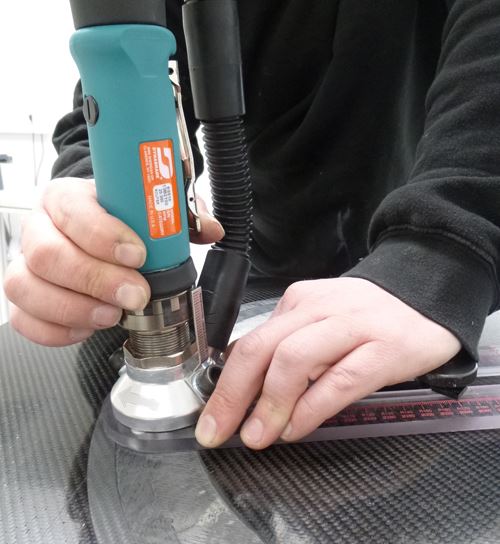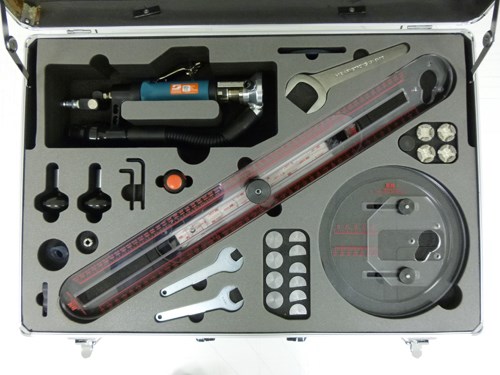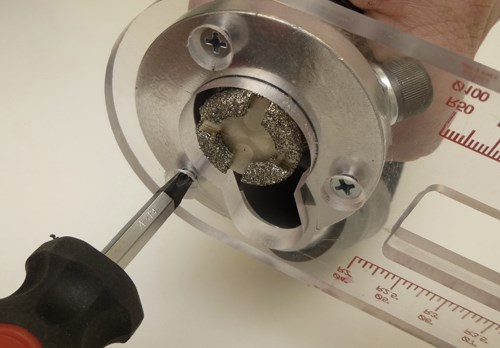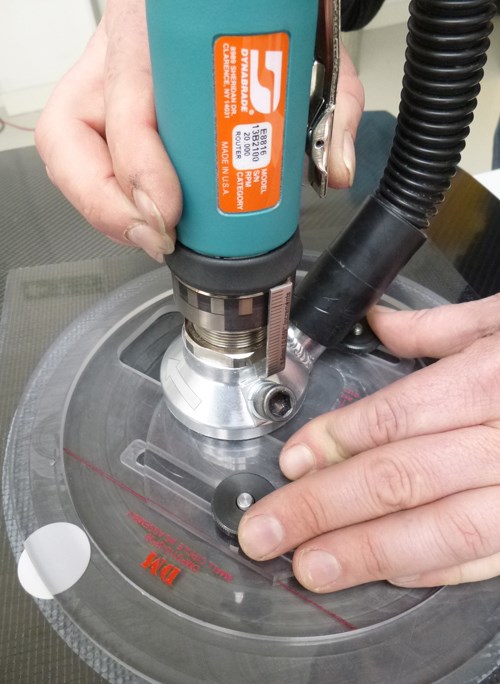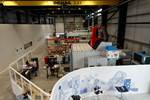Field repair: Step-sanding tool kit and more
Onsite repairs to damaged composite parts, historically, have involved a time-consuming process, the success of which depends on the skill and experience of the repair technician and the availability of suitable tools.
Onsite repairs to damaged composite parts, historically, have involved a time-consuming process, the success of which depends on the skill and experience of the repair technician and the availability of suitable tools. The need to make repairs to critical structures, such as composite aircraft wing/fuselage skins and auto body panels, has stimulated much research into and development of repair techniques and the tools they require. One result of these efforts is a new off-the-shelf step-sander tool kit available from composites training and consultancy company Dark Matter Composites Ltd. (Redbourn, Hertfordshire, UK).
Reportedly useful not only for the aerospace sector but also other sectors served by composites manufacturers (e.g., civil infrastructure, marine and automotive), the kit is designed to reduce the time required for, and improve the quality of, composite repairs and is intended to aid both experienced and novice technicians. Its use is said to simplify material discovery (identification of the layup sequence via removal of a small amount of material) and subsequent repair work on a variety of gel-coated, chopped strand, unidirectional, stitched or woven composite mats (with or without veils) and thermoset or thermoplastic matrices.
The company claims that when the kit’s tools are combined with an appropriate dust-extraction system, removal of dust generated at the point of source is so complete that it eliminates the need for technicians to wear dust masks during surface preparation and saves the time required to set up containment curtains. Further, it reduces the risk that carbon dust abraded from carbon fiber-reinforced composites will become airborne and short out nearby electrical equipment and circuitry. “Imagine destroying a car’s electrical system while trying to repair a damaged body panel,” says Rodney Hansen, managing director, Dark Matter Composites. “Such a possibility was the main reason we developed this kit. We wanted the best extraction tool available for use in our own repair courses to mitigate just this type of risk.”
Dark Matter worked with a number of equipment suppliers to modify existing tools to make them better suited for composite repairs. One result was a modified Dynabrade air router (Dynabrade Europe Sàrl, Wormeldange-Haut, Luxembourg) with special diamond-tipped planing heads. The router can accommodate a portable dust-extraction unit.
The air router is used in combination with a versatile system of moveable jigs to make step-sanded repairs to composite surfaces — even those with internal and external double curvature — faster and more accurately than standard scarf repairs can be made. Scarfing, or tapered sanding, is a common method of removing damaged material from a composite surface via a high-speed grinder, prior to bonding in a repair patch. Step sanding is an alternative method of material removal that is generally considered the superior technique for structural repairs, but also is more difficult and requires greater skill.
The equipment in the tool kit has been selected to facilitate abrasion of vertical and horizontal surfaces while capturing dust at the source. The system reportedly enables repair surface preparation on damaged areas up to 1,220 mm in diameter, in step increments as small as 1 mm and depth increments as accurate as ±0.05 mm. The kit comes standard with four diamond planing heads in four grit levels for removal of a range of thermoset composite materials from coarse to fine. For thermoplastic composites, the kit’s standard diamond-tipped planers can be replaced with planers that use conventional abrasives, which are better suited to those polymers.
All kit components fit into a foam-lined insert in a Dynabrade case complete with Dark Matter Composites nameplate and serial number (see “What’s Inside,” on p. 82). The router itself enables depth adjustments in increments of 0.05 mm via pointers and laser-engraved scales in metric and imperial units. All jigs are adjustable in 1-mm increments (also with scale pointers and laser-engraved scales in metric and imperial units for radii and diameters).
Two types of portable dust-extraction systems (one electric-powered and compatible with carbon fiber dust, the other air-powered for use in hazardous areas, such as when fuel is present, both equipped with boom arms) are available for use with the kit. And Hansen says that when the kit is combined with nondestructive testing (NDT) technologies like the DolphiCam ultrasonic camera system (produced by DolphiTech AS, Raufoss, Norway), the use of “standard” repair patches is viable and can even eliminate discovery activities. “We’ve also demonstrated that the use of temporary repair tooling and pressure-debulked standard repair patches can improve the quality of a repair. The composites industry is currently on the cusp of having much simpler repair processes that will benefit all.”
The company claims that skilled users can make structurally superior step-sanded repairs to composite parts in one-half to as little as one-quarter the time required with current practices, and further claims that even novice technicians can save time and, more importantly, achieve consistent, repeatable results. Time savings can lead to significant reductions in the cost of in-situ repairs, a topic that will become more important as more composites are used in structural applications in other markets — for example, the automotive industry.
To enable user success with the kit, Dark Matter also offers, beyond its printed user’s manual, nine videos (supplied on a USB drive with the kit and available free on its Web site). They demonstrate important steps in setting up the system, adjusting it and using it for material removal and identification. In addition, the organization offers two-day training courses on tool-kit use at its UK facility. The small classes (class size is limited to a maximum of eight students) are described as 30% instruction and 70% hands-on experience and are open even to those with no prior experience in composites repair. Dark Matter Composites also is working on a smaller version of the kit that can be used on more intricate surfaces with greater curvature.
Related Content
PEEK vs. PEKK vs. PAEK and continuous compression molding
Suppliers of thermoplastics and carbon fiber chime in regarding PEEK vs. PEKK, and now PAEK, as well as in-situ consolidation — the supply chain for thermoplastic tape composites continues to evolve.
Read MorePlant tour: Albany Engineered Composites, Rochester, N.H., U.S.
Efficient, high-quality, well-controlled composites manufacturing at volume is the mantra for this 3D weaving specialist.
Read More3D weaving capabilities achieve complex shapes, reduce weight and cost
JEC World 2024: Bally Ribbon Mills is displaying film-infused 3D woven joints, woven thermal protection systems (TPS) and woven composite 3D structures.
Read More3D-woven composites find success in aerospace, space
CAMX 2024: Bally Ribbon Mills experts are displaying the company’s various joints, thermal protection system (TPS) technologies and other 3D woven composites for mission-critical applications.
Read MoreRead Next
Developing bonded composite repair for ships, offshore units
Bureau Veritas and industry partners issue guidelines and pave the way for certification via StrengthBond Offshore project.
Read MorePlant tour: Daher Shap’in TechCenter and composites production plant, Saint-Aignan-de-Grandlieu, France
Co-located R&D and production advance OOA thermosets, thermoplastics, welding, recycling and digital technologies for faster processing and certification of lighter, more sustainable composites.
Read MoreAll-recycled, needle-punched nonwoven CFRP slashes carbon footprint of Formula 2 seat
Dallara and Tenowo collaborate to produce a race-ready Formula 2 seat using recycled carbon fiber, reducing CO2 emissions by 97.5% compared to virgin materials.
Read More
